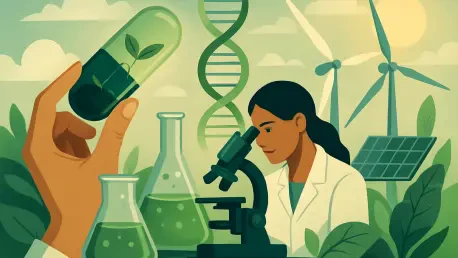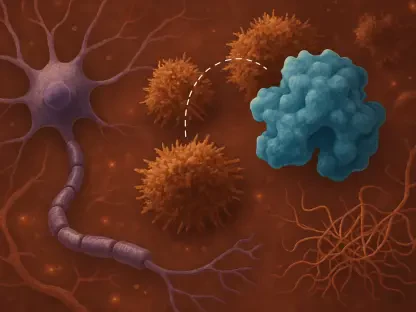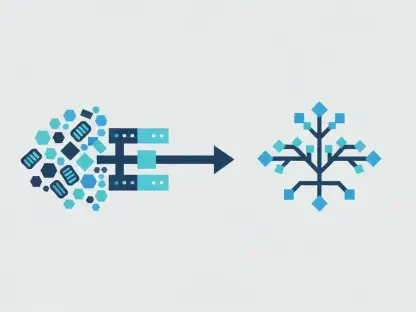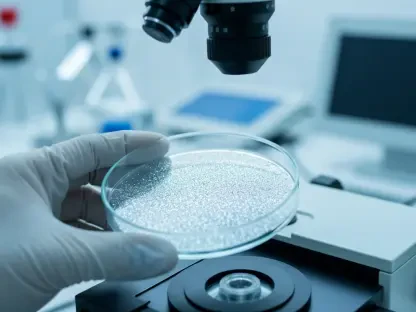In the rapidly evolving landscape of pharmaceutical research, the integration of advanced technology with traditional methodologies is crucial for achieving breakthroughs in sustainable drug discovery. A prominent example of such integration is the collaboration between Optibrium and TalTech, which aims to drive innovation by developing advanced metabolism models for drug discovery. This collaborative effort is bolstered by European Union funding through the Marie Sklodowska-Curie Actions COFUND program, INNOCHEMBIO. The essence of this project is rooted in promoting greener chemistry and improving the predictive capabilities of existing drug metabolism models. Through this synergistic approach, the goal is to enhance the efficiency, speed, and sustainability of drug discovery, reducing the need for expensive laboratory experimentation and significantly lowering costs.
The Optibrium-TalTech partnership is primarily focused on engineering more effective predictive metabolism models. These models, powered by Machine Learning Interatomic Potentials (MLIPs), are tailored to supersede the hybrid of machine learning and physics-based methods previously relied upon. The strategic shift towards MLIPs promises better computational efficiency, making high-quality predictions without the cost burdens often associated with detailed, physics-based models. The project also includes a PhD position funded by the European Union, demonstrating the deep integration of academic research with industry needs to foster innovation in drug development. Such academic-industry collaborations are crucial for aligning scientific inquiry with practical applications, ultimately paving the way for developing safer and more effective pharmaceuticals in alignment with sustainable principles.
Academic and Industry Synergy in Drug Metabolism
One of the standout features of this collaborative venture is its focus on integrating cutting-edge computational models within Optibrium’s StarDrop™ platform. By embedding advanced predictive models for drug metabolism into this software, the collaboration maximizes the practical relevance and applicability of research findings. This approach not only facilitates more accurate predictions of drug metabolism but also provides real-world industry applications crucial for the pharmaceutical sector. A key element of the project’s success is the emphasis on drug-like molecules and the metabolism mediated by Cytochrome P450 enzymes. These enzymes play a critical role in the metabolism of various pharmaceuticals, thus making them an essential component of drug discovery and development.
By focusing on these enzymes and incorporating them into predictive models, the partnership seeks to improve early risk assessments and compound design. This leads to streamlined drug discovery processes that are more in tune with eco-friendly chemistry principles. The collaboration reflects a growing trend within the pharmaceutical research community, where the goal is sustainable solutions that deliver high-quality results while minimizing environmental impact. The collective focus on developing computational models that replace traditional laboratory methods signifies a shift towards technological advancements in addressing scientific challenges. Through this partnership, the capability of machine learning and AI to revolutionize drug discovery is unmistakably evident.
Technological Innovation and Its Impact on Drug Discovery
The Optibrium-TalTech initiative underscores the importance of developing methodologies to address the shortcomings of existing predictive models. Through a robust strategy that focuses on reducing laboratory dependency, costs, and inaccuracies, the collaboration aligns perfectly with the industry’s objectives of boosting operational efficiency and environmental stewardship. The project not only emphasizes a need to develop superior models but also showcases how academic insights and industrial requirements can blend to solve pressing challenges. As the pharmaceutical industry strives for more efficient and sustainable practices, strategic collaborations like this stand out by paving the way for informed decision-making and rapid product development.
The partnership with the European Commission’s INNOCHEMBIO program amplifies the necessity to cultivate future expertise in sustainable chemistry. Providing PhD candidates with exposure to genuine technological challenges ensures that research remains grounded in practical applications. Industry leaders like Mario Öeren and Matthew Segall emphasize the dual benefits presented by this project: advancing personal expertise while addressing future industry hurdles. By focusing on faster, cost-effective predictive models, the collaboration promises waste reduction and resource conservation, perfectly aligning with global sustainability goals. The potential impact on the pharmaceutical industry is immense, as these solutions not only streamline discovery processes but also contribute to a broader comprehension and implementation of sustainable practices.
Bridging Scientific Innovation and Practical Solutions
In the swiftly advancing field of pharmaceutical research, fusing technology with traditional methods is vital for sustainable drug discovery breakthroughs. A prime example of this harmony can be seen in the collaboration between Optibrium and TalTech, focusing on creating advanced metabolism models. Supported by the European Union through the Marie Sklodowska-Curie Actions COFUND program, INNOCHEMBIO, this partnership underscores a commitment to greener chemistry and enhancing the predictive abilities of drug metabolism models. The aim is to boost the speed, sustainability, and efficiency in drug discovery while cutting down costly lab experiments.
The joint venture centers on crafting more effective predictive metabolism models. These models use Machine Learning Interatomic Potentials (MLIPs), surpassing previously used hybrid methods. MLIPs offer superior computational efficiency and high-quality predictions without the financial burden seen in detailed models. The project also includes a PhD role funded by the EU, highlighting the integration of academia with industry, essential for innovation in drug development that aligns with sustainable principles.









